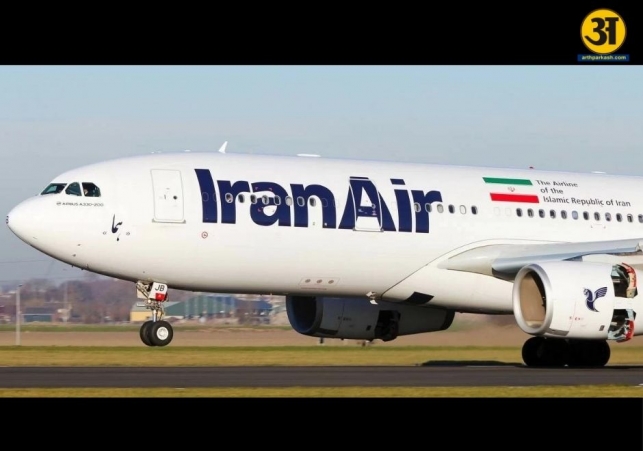
Iran reopens airspace post-Israel ceasefire, aiding global flights
Iran reopens central and western airspace after ceasefire with Israel, easing flight routes
- By Gurmehar --
- Sunday, 29 Jun, 2025
Iran has reopened large parts of its airspace after a 12-day conflict with Israel came to an end. The Ministry of Roads and Urban Development confirmed on Saturday that international overflights can now use Iran’s central and western skies again. This decision was made following a ceasefire earlier in the week and after several safety assessments by Iran's Civil Aviation Organization (CAO).
The airspace over the eastern part of Iran had already reopened earlier in the week. Now, with central and western routes also available, many international transit flights between Asia, the Middle East, and Europe can go through Iran again. This is expected to ease the pressure on global flight routes, which were heavily affected during the conflict.
However, not all air routes are fully operational. Iran is still not allowing flights to or from certain airports. Specifically, Tehran’s Mehrabad and Imam Khomeini airports, along with airports in the northern, southern, and some western regions, remain closed until further notice. The CAO said these areas would remain shut until at least 14:00 local time (10:30 GMT) on Sunday.
During the conflict, Iran had completely closed its airspace on June 13, after Israeli airstrikes targeted Tehran and other key locations. In response, Iran launched retaliatory missile attacks, causing concern about flight safety. This resulted in many airlines changing their routes and avoiding the region altogether.
Steps toward normal operations
According to officials, the current reopening applies mainly to international overflights—flights that cross over Iran without landing. These are crucial for long-distance flights between Europe and Asia, as they often pass over Iran to save time and fuel. Without access to Iranian skies, airlines had to reroute their flights, leading to delays and increased costs.
The CAO also reopened some eastern airports for both domestic and international use, including Mashhad and Chabahar. These airports were also affected during the conflict, with Mashhad reportedly being one of the sites hit in Israeli airstrikes. Now, they are back in operation as the situation has become more stable.
Majid Akhavan, a spokesperson for the Roads and Urban Development Ministry, said that eastern Iran is now fully open for flight operations, including both commercial and transit traffic. He confirmed that the airspace corridor through the east is clear, helping airlines resume near-normal services across the region.
Despite the reopening, the government has asked people to stay away from closed airports and check for updates before traveling. Authorities are releasing regular announcements to keep both passengers and airlines informed about the current flight status.
Travel experts say this gradual reopening is a positive step for international travel in the region. During the two weeks of fighting, airlines had to avoid Iranian airspace, creating bottlenecks and longer flight times for many routes. Some flights were even cancelled or rerouted through much longer paths over the Arabian Sea or Central Asia.
ALSO READ: Israeli attacks kill 62 people in Gaza Strip, says Civil Defence Agency
ALSO READ: Body of Brazilian tourist recovered after fatal fall from Indonesian volcano cliff
The reopening is likely to reduce congestion on these alternate routes and bring back some normalcy to the global aviation network. However, it will still take a few days before full services resume. Flights to and from Tehran and other major Iranian cities will stay suspended until authorities decide that it is safe to restart operations.
The government has assured the public that safety remains the top priority. They are working closely with air traffic controllers, airport staff, and military forces to monitor the situation and reopen the remaining airspace in a controlled and safe manner.
In conclusion, Iran’s decision to reopen its airspace comes as a relief to international airlines and travelers, especially after the recent conflict severely disrupted flights in the region. While some parts of the country are still off-limits, the restoration of major flight corridors through Iran is expected to make global air travel smoother in the coming days.





